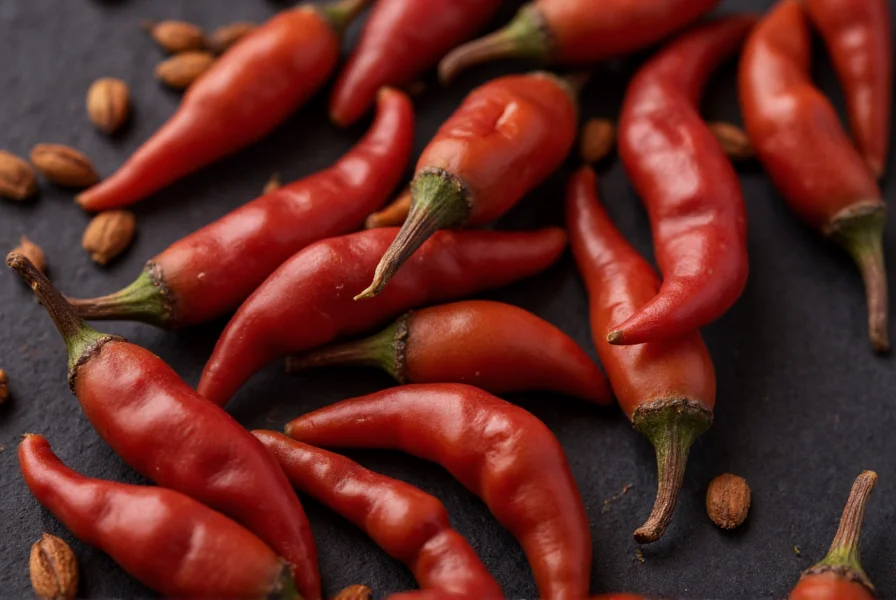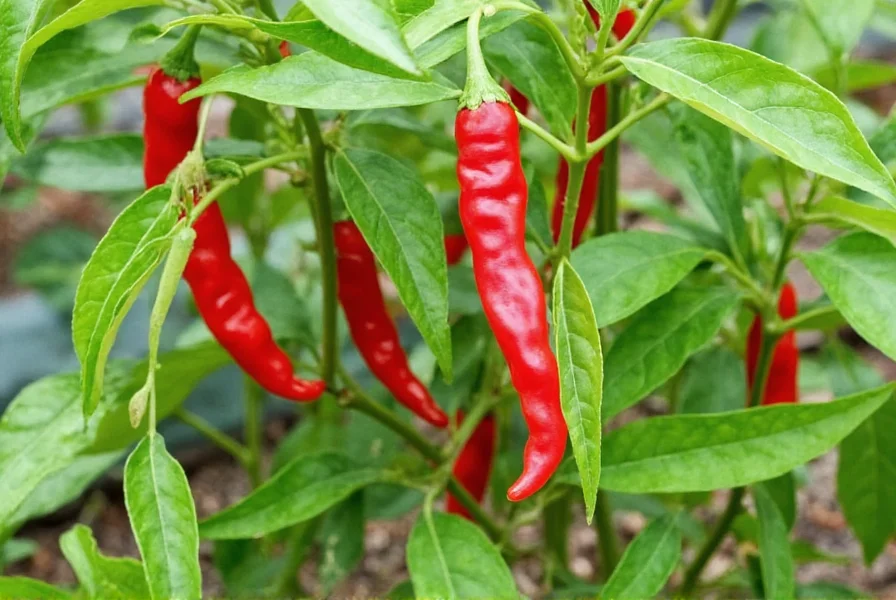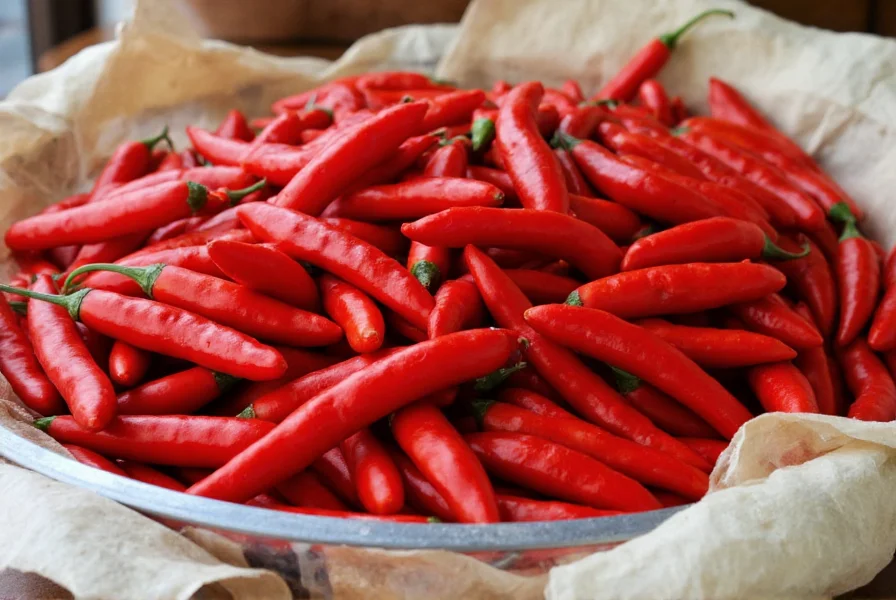Calabrian chili seeds represent one of Italy's most prized culinary treasures, originating from the sun-drenched region of Calabria at the toe of Italy's boot. These distinctive seeds produce the famous peperoncino calabrese, a small but flavorful chili pepper that has become increasingly popular among home gardeners and professional chefs alike. Understanding these unique seeds goes beyond simple gardening—it connects to centuries of Italian culinary tradition and regional identity.
What Makes Calabrian Chili Seeds Unique
Calabrian chili seeds differ significantly from standard chili seeds available at most garden centers. The resulting peppers (Capsicum annuum var. acuminatum) typically measure 2-3 inches long with a tapered shape that transitions from green to vibrant red when mature. What sets them apart is their complex flavor profile—unlike many single-note chili varieties, Calabrian peppers offer a harmonious blend of moderate heat, fruity sweetness, and subtle smokiness with citrus undertones.
The heat level of Calabrian chili peppers ranges from 15,000 to 30,000 Scoville Heat Units, placing them between jalapeños and cayenne peppers in intensity. This moderate heat makes them versatile for cooking without overwhelming other flavors—a characteristic highly valued in traditional Calabrian cuisine where balance is paramount.

Authentic Calabrian Chili Seeds vs. Imposters
Many seeds marketed as "Calabrian" are actually generic chili varieties. True Calabrian chili seeds have specific identifying characteristics:
| Characteristic | Authentic Calabrian Seeds | Generic "Calabrian" Seeds |
|---|---|---|
| Seed Color | Deep reddish-brown | Lighter brown or yellowish |
| Pepper Shape | Tapered, slightly curved | More uniform, straighter |
| Flavor Complexity | Fruity, smoky, citrus notes | Primarily heat-focused |
| Regional Indicators | Often labeled IGP (Protected Geographical Indication) | No specific regional designation |
Optimal Conditions for Growing Calabrian Chili Seeds
Successfully growing Calabrian chili plants from seeds requires attention to specific conditions that mimic their native Mediterranean environment. These peppers thrive in warm climates but can adapt to various growing zones with proper care.
Planting Calabrian Chili Seeds: Step-by-Step
- Start indoors: Begin 8-10 weeks before last frost date
- Soil temperature: Maintain 75-85°F (24-29°C) for optimal germination
- Planting depth: Sow seeds ¼ inch deep in well-draining seed starting mix
- Moisture: Keep soil consistently moist but not waterlogged
- Light: Provide 12-16 hours of direct light daily after sprouting
- Transplanting: Move outdoors after danger of frost has passed and soil reaches 65°F (18°C)
When transplanting Calabrian chili seedlings to your garden or containers, space plants 18-24 inches apart in full sun locations. These peppers prefer slightly acidic to neutral soil (pH 6.0-7.0) with excellent drainage. Adding compost or well-rotted manure to planting holes provides essential nutrients without overwhelming the plants.
Caring for Calabrian Chili Plants
Proper care throughout the growing season ensures healthy plants and abundant harvests of authentic Calabrian peppers. Unlike many commercial chili varieties, Calabrian peppers benefit from traditional growing methods that emphasize flavor development over sheer yield.
Watering Requirements
Calabrian chili plants prefer consistent moisture but dislike soggy roots. Water deeply 1-2 times per week rather than frequent shallow watering. During fruit set and ripening, slightly reducing water can enhance flavor concentration—a technique used by traditional Calabrian growers.
Fertilizing Strategy
Use a balanced organic fertilizer when transplanting, then switch to a low-nitrogen, high-phosphorus formula once flowering begins. Excessive nitrogen promotes leaf growth at the expense of fruit production and can dilute the distinctive Calabrian pepper flavor.

Traditional Calabrian Pepper Harvesting and Preservation
In Calabria, harvesting and preserving these prized peppers follows time-honored methods that maximize flavor and shelf life. Understanding these techniques helps home growers capture authentic Calabrian flavors.
When to Harvest Calabrian Peppers
For fresh use: Pick peppers when fully red and slightly soft to the touch
For drying: Harvest when peppers reach full color but remain firm
For 'nduja production: Pick at peak ripeness when sugars have fully developed
Traditional Preservation Methods
Calabrian cooks have developed several preservation techniques that maintain the unique flavor profile:
- Oil preservation: Submerging whole or crushed peppers in high-quality olive oil
- Drying: Air-drying peppers then grinding into flakes or powder
- 'Nduja preparation: Fermenting peppers with pork fat and salt for the famous Calabrian spread
- Vinegar preservation: Creating pepper-infused vinegars for cooking
Culinary Applications of Authentic Calabrian Chili
The distinctive flavor of Calabrian chili peppers makes them versatile beyond simple heat addition. Their complex profile enhances dishes without overwhelming other ingredients—a hallmark of Calabrian cooking philosophy.
Signature Dishes Featuring Calabrian Chili
- 'Nduja: The famous Calabrian spreadable salume made with pork fat and Calabrian peppers
- Pasta 'Ncaciata: Traditional Calabrian baked pasta dish featuring tomato sauce with Calabrian peppers
- Peperoncino oil: Infused olive oil used for dipping bread or finishing dishes
- Seafood preparations: Enhancing grilled fish and shellfish with subtle heat
When cooking with Calabrian chili, remember that less is often more. The goal is to enhance rather than dominate flavors. Start with small amounts and adjust to taste, as the complex flavor develops during cooking.
Finding Authentic Calabrian Chili Seeds
Locating genuine Calabrian chili seeds requires careful selection. Look for seeds with these indicators of authenticity:
- Seeds sourced directly from Calabria, Italy
- Suppliers who specify the Italian name "peperoncino calabrese"
- Seeds that mention IGP (Protected Geographical Indication) status
- Suppliers who provide information about the specific Calabrian region
Avoid seeds marketed with exaggerated claims about heat level, as authentic Calabrian peppers are prized for their balanced flavor rather than extreme spiciness. Reputable seed banks specializing in heirloom or region-specific varieties typically offer the most authentic options for growing true Calabrian chili plants.
Troubleshooting Common Calabrian Chili Growing Challenges
Even with proper care, Calabrian chili growers may encounter specific challenges. Understanding these issues helps maintain healthy plants and authentic flavor development.
Addressing Poor Fruit Set
If your Calabrian chili plants flower but fail to produce fruit:
- Ensure nighttime temperatures stay above 60°F (15°C)
- Hand-pollinate flowers on still days using a small brush
- Avoid over-fertilizing with nitrogen
- Maintain consistent watering during flowering
Managing Pests Naturally
Traditional Calabrian growers use companion planting to protect chili plants:
- Plant basil nearby to repel aphids
- Use marigolds as a natural nematode deterrent
- Create garlic spray for spider mite prevention
- Encourage beneficial insects with flowering herbs
Conclusion
Calabrian chili seeds offer home gardeners and cooks a direct connection to centuries of Italian culinary tradition. By understanding their unique characteristics, growing requirements, and traditional uses, you can successfully cultivate and utilize these prized peppers. The distinctive flavor profile—moderate heat balanced with fruity, smoky notes—makes authentic Calabrian chilies a valuable addition to any garden or kitchen. Whether you're growing them for fresh use, preservation, or to create traditional Calabrian dishes like 'nduja, these seeds represent more than just a chili variety—they embody a regional culinary heritage worth preserving.











 浙公网安备
33010002000092号
浙公网安备
33010002000092号 浙B2-20120091-4
浙B2-20120091-4